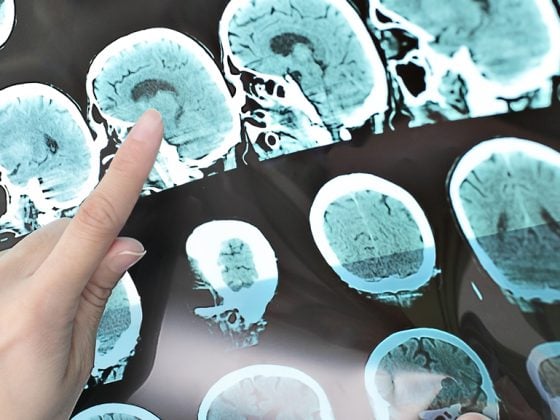The two completed phase III studies SUNBEAM [1] and RADIANCE [2] were able to demonstrate the efficacy of the new active substance in the area of other – radiological and clinical – endpoints in addition to a reduction in relapse frequency through therapy with ozanimod. For the first time in MS research, a slowing of brain volume decline was observed in the cortical gray matter and thalamus.
Compared to treatment with interferon β1a, patients undergoing Ozanimod therapy experience far fewer relapses. Both studies independently concluded that the patient group treated with ozanimod at the higher dose of 1 mg daily fared best with respect to the primary endpoint of ARR (annualized relapse rate). This was confirmed in extended subgroup analyses for different genders, ethnicities, and age categories, among others. However, the new drug was also shown to be extremely effective in other areas compared with interferon β1a (Table 1). Radiologically, ozanimod significantly reduced the number of new or growing T2 lesions, as well as those of gadolinium-uptaking lesions. Changes in various scores on function and quality of life reached significance only in isolated cases, but showed trends favoring Ozanimod therapy. This certainly also reflects the multifactorial influences that contribute to the well-being of patients with chronic disease and the importance of striving for holistic care in treatment.

Preservation of brain volume
Of note is the slowing of brain volume decline observed in both the SUNBEAM and RADIANCE studies. This was shown for total and thalamic volume, as well as for cortical gray matter volume. The authors attribute the radiological effect to the property of ozanimod to positively influence disease-related structural changes. The tendency to improve cognition and physical function described in the studies supports this hypothesis. Thus, it is known from previous studies that the progression of physical and cognitive impairment in MS is associated with brain volume depletion [3,4]. However, in a pooled analysis of both study populations, no difference in progression of disease-related disability was found between the patient groups. This could be due to statistical reasons or even the relatively short observation period, but it could also indicate that brain volume depletion has little clinical relevance, at least in the short term. Although the significance of the ozanimod effect on brain volume remains unclear, this is an interesting endpoint in MS research that can potentially provide objective evidence of disease progression, particularly including cognition.
Phase III… and then?
Further data on the efficacy of ozanimod are being collected on an ongoing basis in the open label DAYBREAK study [6]. All included patients receive 1 mg ozanimod daily, regardless of the treatment group to which they were assigned during the Phase III studies. So far, it has been shown that the frequency of relapses has been reduced to a comparable level in all participants, which is even slightly lower than in the pivotal trials (Fig. 1). Ozanimod also proved effective in radiologic endpoints to date, with fewer new T2 and gadolinium-uptaking lesions than in the interferon β1a and ozanimod 0.5-mg groups of the RADIANCE and SUNBEAM trials. This *Only the dosage of 1.0 mg ozanimod hydrochloride (corresponding to the approved dosage of 0.92 mg) is shown. preliminary efficacy data await corroboration with time and wider use of the new drug.

The agony of choice
With an additional agent of a known class of drugs on the market, the question of advantages and disadvantages compared to other S1P receptor modulators such as fingolimod arises. In an indirect comparison of the two substances by Swallow E et al. [5] were equal in terms of efficacy. In terms of safety and tolerability, however, the analysis indicated a superiority of ozanimod. The indirect cost-benefit calculation could therefore be in favor of the new active ingredient. Regardless of this comparison, the now expanded spectrum of available S1P receptor modulators facilitates further individualization of treatment for MS patients.
Literature:












